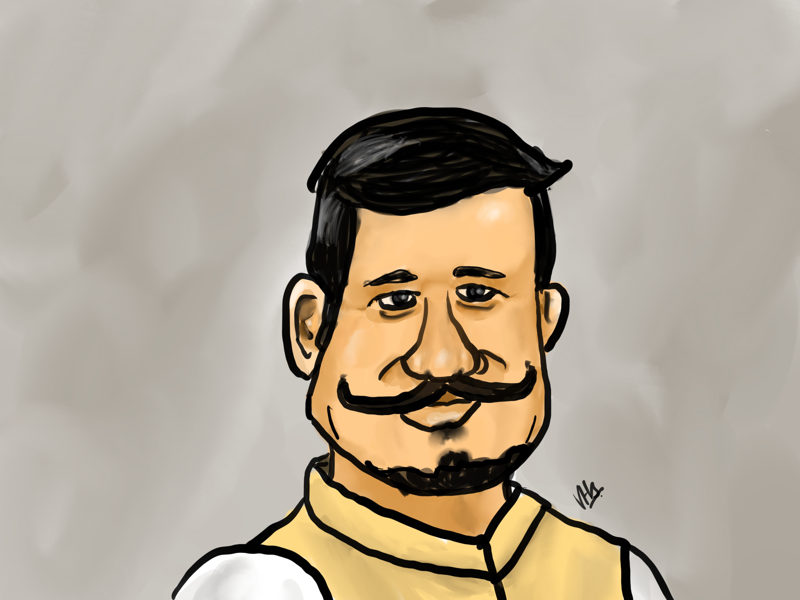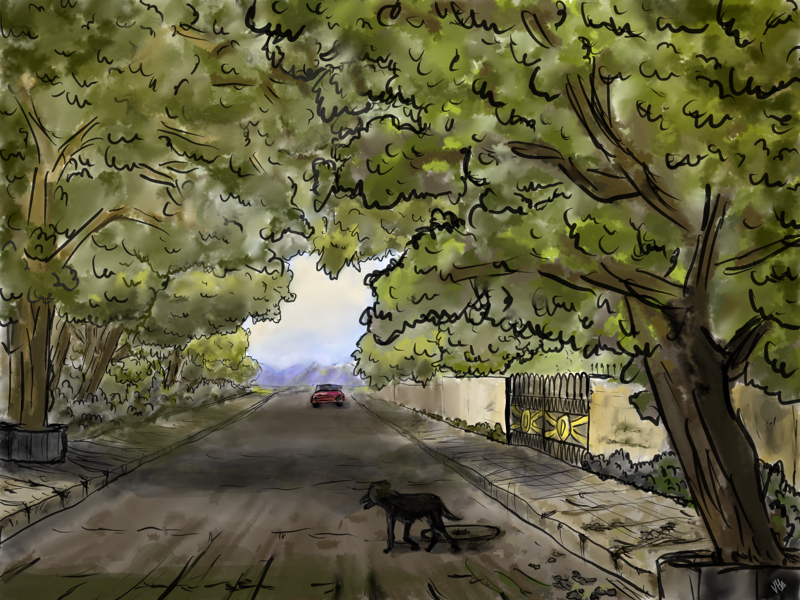Stream in the forest

A forest river. Painted using Sketchbook on iPad

A forest river. Painted using Sketchbook on iPad

After a long time I pick up my iPad and Apple pencil. Feeling a bit rusty though and not sure if this one has come out well.

Painted on Sketchbook on iPad.

Another painting in quick time. Painted on Sketchbook on my iPad.

Another landscape painting after a long time in Sketchbook on iPad.
These days I find myself, somewhat unconsciously, viewing more videos on Facebook than YouTube. This is something that Facebook has been pushing for some time. While my TV time has drastically reduced, this hasn’t meant an overall decline in passive content consumption. In fact, the infinite choice of “channels” on popular social media is a much worse problem than regular TV. In the last few days, I have been viewing snippets of a large number of movies, cooking shows, travel vlogs, sitcoms and other stuff too varied to list.
The algorithm is interesting because it keeps circulating content and tries to serve up videos of the same genre that I was watching earlier. And then suddenly it resets and serves up an entirely new set of videos. There is a strong urge to keep on swiping for more interesting stuff since the recommendation list is bottomless. Oh, and did you notice those sneaky little adverts/“sponsored” videos that keep getting inserted between the regular content? A few years ago my brother wrote on social media’s negative impact on his blog. It’s a somewhat lengthy read but well worth the effort. He specifically notes that social media companies are discovering increasingly ingenious ways to hook users, one of them being “rabbit hole recommendations”.[1] While I rarely use social media for personal updates of late, I must plead guilty to being a passive content consumer.
One thing is clear though: big tech social media has moved from being user-centric to content-centric and finding ingenious ways to grab our time and attention and generate revenue. We are the product after all.
This thought has occurred to me more than once and seems that there is some logic to this thinking, namely whether the main purpose of spam[1] is to kill electronic communication.
Take e-mail – one of the oldest forms of electronic communications still around. On my google mail ID, for instance, I have been getting a mountain of “detected” hard spam which get directly sent to the spam folder, but apart from that, I also get “soft” promotional spam from sources that have a legitimate reason to know my identity[2] that I am forced to manually delete from the inbox every time because I also get genuine notifications from such sources. This has led to a situation where I judge that out of 100 e-mails I get, I hardly get around 2 or 3 from genuine human beings sending me an e-mail. If you don’t check your mailbox almost every day, you could be left with more than hundreds of unread e-mails, most of which are promotional mails and/or notifications from websites/providers. These days, e-mail is mostly dead as a human-to-human communication medium, except in a corporate context, where at least basic levels of anti-spam is implemented and security policies are periodically reviewed and updated.
Social media, another tool which began as a human-to-human connection and communication platform, has again been taken over by corporate advertising and promotional content, with a huge spam problem to boot. Instant messengers, including their modern avatars like WhatsApp have been taken over by business spammers who keep sending you unsolicited messages. The use of pre-recorded marketing calls for spamming seems to have increased tenfold, despite attempts by the regulatory authorities and governments to ban them, showing that the technology to prevent spamming at a mass level is still catching up. The pre-recorded voice calls are the worst, taking up your valuable attention and forcing you to attend or cut the call, and each such momentary distraction adding up to unproductive time. And of course, SMS spam continues unabated, with spammers increasingly adopting techniques that prevent the recipient from directly blocking the source. With the development of AI technology, I fear this problem of non-genuine electronic communication will only increase and make fighting spam tougher. On this very blog, I have to keep clearing the detected spam comments by the dozens almost every day, while comments from legitimate readers have almost disappeared completely. While I personally keep periodically reviewing my anti-spam measures, I doubt that most people bother beyond a point.
While I searched about this topic online, I found an article on ZDNet from twenty two years ago, highlighting how spam could destroy the internet. Back then, e-mail spam was the major source of the problem. Well, the internet is not destroyed, but it seems that we are still waging a tough battle against spammers who have now infiltrated every single form of electronic communication possible.
Ultimately I almost have to wonder whether spam was invented by folks motivated to destroy electronic communication. Why else would they bother? With so much spam clogging up the electronic bandwidth, increasing noise-to-signal ratio to unacceptable levels, and frustrating recipients everywhere, I fail to see how pure commercial interests lie behind this phenomenon. In fact, when I sometimes read some of the more nonsensical spam I receive I almost think that the main purpose of spam is to to kill electronic communication completely by flooding us with shit.

A quick painting using Sketchbook on my iPad.

A caricature portrait after a long time. Painted using Sketchbook on Krita.
A digital painting after a long time. Painted using Sketchbook on iPad.
